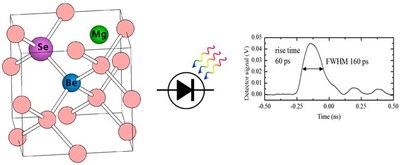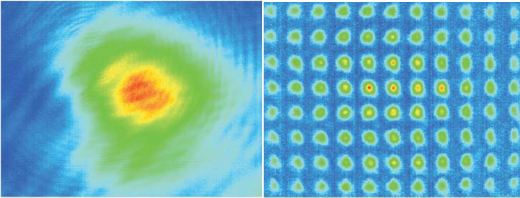Helium-like impurity centers in silicon and germanium: Infrared light interaction, non-equilibrium distributions and optoelectronic applications
The aim of this project is to investigate multiple-charge impurity centers in elemental semiconductors Silicon (Si) and Germanium (Ge) for future optoelectronic applications in the mid-infrared wavelength range (approximately 3-14 µm). Of particular interest are optical, electro-optical, magneto-optical, equilibrium and dynamical properties (on the pico-to-nanosecond time scale) of double donors and single charge multi-donors in Si, as well as double and triple acceptors in Ge. A special focus will be given to the structure of new centers and their excited states, determination of the concentration of electrically active centers in the new materials. We want to understand the details of relaxation processes and to determine the fundamental limits of the achievable temporal resolution with a goal of efficient broad-band and fast detection of light in the mid-infrared wavelength range. We will study technological aspects of crystal growth and doping of the semiconductors, including combinations of different dopants, both the same type of conductivity and the compensating ones; conventional and newly developed techniques; long-term stability of such centers.
This joint project is funded by the Deutsche Forschungsgemeinschaft with cooperative project partners: Humboldt-Universität zu Berlin, Institute for Physics of Microstructures (N. Novgorod, Russia) and Ioffe Institute (St. Petersburg, Russia).

Fig.: Different atoms from groups II and VI form double donor and acceptor center, depending on their position in lattice of elemental semiconductors (left). This influences the properties of such a semiconductor, such as their optical spectra, that is used for developing of effective infrared photodetectors (center). One can model the dynamical characteristics of such detectors by targeted doping of a semiconductors, including co-doping and compensation. Temporal responses of detectors are measured down to a picosecond time resolution [N. Deßmann et al., Applied Physics Letters 106, 171109 (2015)]. Time-resolved spectroscopy gives insights in fundamental life times of particular impurity levels which is a base of their consideration for different optoelectronic applications, such as lasers, optical switches, detectors (right).
Contact:
Dr. Andreas Pohl
a.pohl@dlr.de
